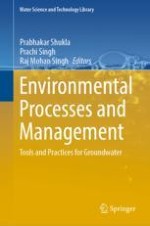2023 | OriginalPaper | Buchkapitel
21. Water Quality Modelling and Parameter Assessment Using Machine Learning Algorithms: A Case Study of Ganga and Yamuna Rivers in Prayagraj, Uttar Pradesh, India
verfasst von : A. K. Shukla, R. Singh, Raj Mohan Singh, R. P. Singh
Erschienen in: Environmental Processes and Management
Aktivieren Sie unsere intelligente Suche, um passende Fachinhalte oder Patente zu finden.
Wählen Sie Textabschnitte aus um mit Künstlicher Intelligenz passenden Patente zu finden. powered by
Markieren Sie Textabschnitte, um KI-gestützt weitere passende Inhalte zu finden. powered by
